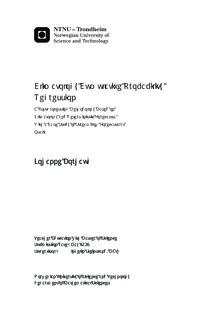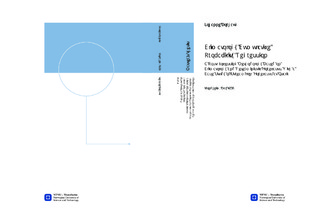| dc.contributor.advisor | Steinsland, Ingelin | nb_NO |
| dc.contributor.author | Borhaug, Johanne | nb_NO |
| dc.date.accessioned | 2014-12-19T14:00:26Z | |
| dc.date.available | 2014-12-19T14:00:26Z | |
| dc.date.created | 2014-06-11 | nb_NO |
| dc.date.issued | 2014 | nb_NO |
| dc.identifier | 723999 | nb_NO |
| dc.identifier | ntnudaim:10410 | nb_NO |
| dc.identifier.uri | http://hdl.handle.net/11250/259290 | |
| dc.description.abstract | This study introduce a new postprocessing methodology for constructing probabilistic forecasts based on climatology and deterministic forecasts. The Climatology Cumulative Probability Regression (CCPR) methodology is based on transforming the climatology cumulative distribution function (cdf) to a new probabilistic forecast, where the transformation procedure is determined by the deterministic forecasts. We base the transformation on fitting a beta cdf on the scale of climatology cumulative probabilities (CCP-scale). The mean of the beta pdf is modelled by a logit link where the linear predictor have different forecasts as covariates. This methodology is flexible to include different forecasts and lead times. The methodology was tested for streamflow data at the catchment Osali in south western Norway for four different lead times. In the case study, we applied the methodology where we successively added more deterministic forecasts into the model, starting with the hydrological forecast, adding the persistence forecast and finally adding the sliding window climatology forecast. When evaluating predictive performance using cross validation, the case study found that the inclusion of the persistence forecast is important for short lead times. When both the hydrological and the persistence forecast was included, the sliding window climatology forecast added little extra predictive information. | nb_NO |
| dc.language | eng | nb_NO |
| dc.publisher | Institutt for matematiske fag | nb_NO |
| dc.title | Climatology Cumulative Probability Regression: A Postprocessing Methodology Based on Climatology and Deterministic Forecasts, With a Case Study of Streamflow Forecasts at Osali | nb_NO |
| dc.type | Master thesis | nb_NO |
| dc.source.pagenumber | 72 | nb_NO |
| dc.contributor.department | Norges teknisk-naturvitenskapelige universitet, Fakultet for informasjonsteknologi, matematikk og elektroteknikk, Institutt for matematiske fag | nb_NO |

